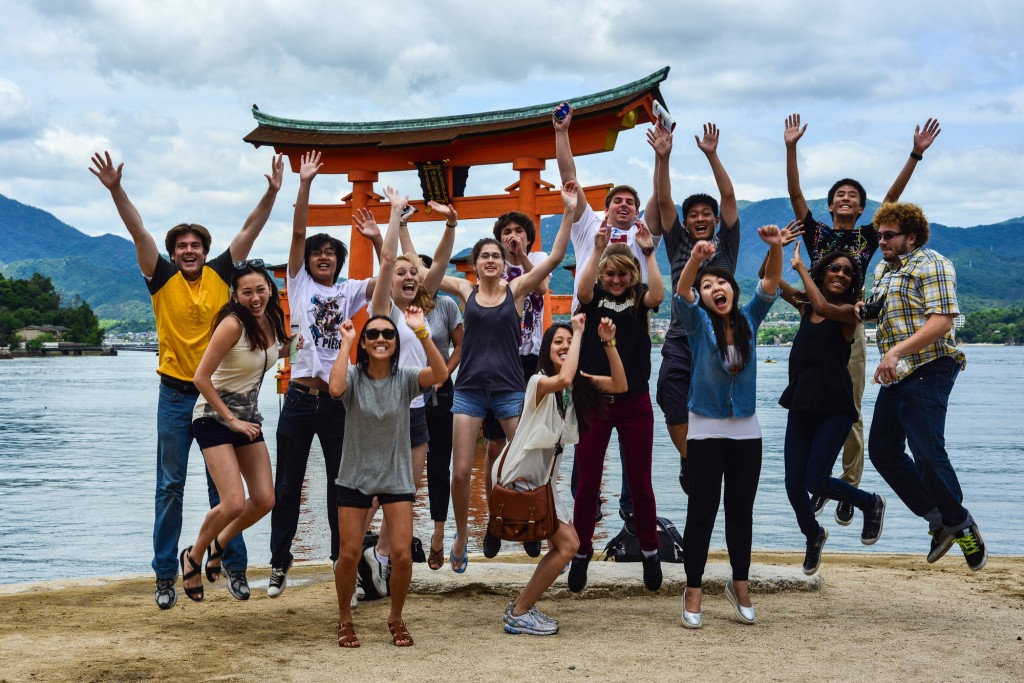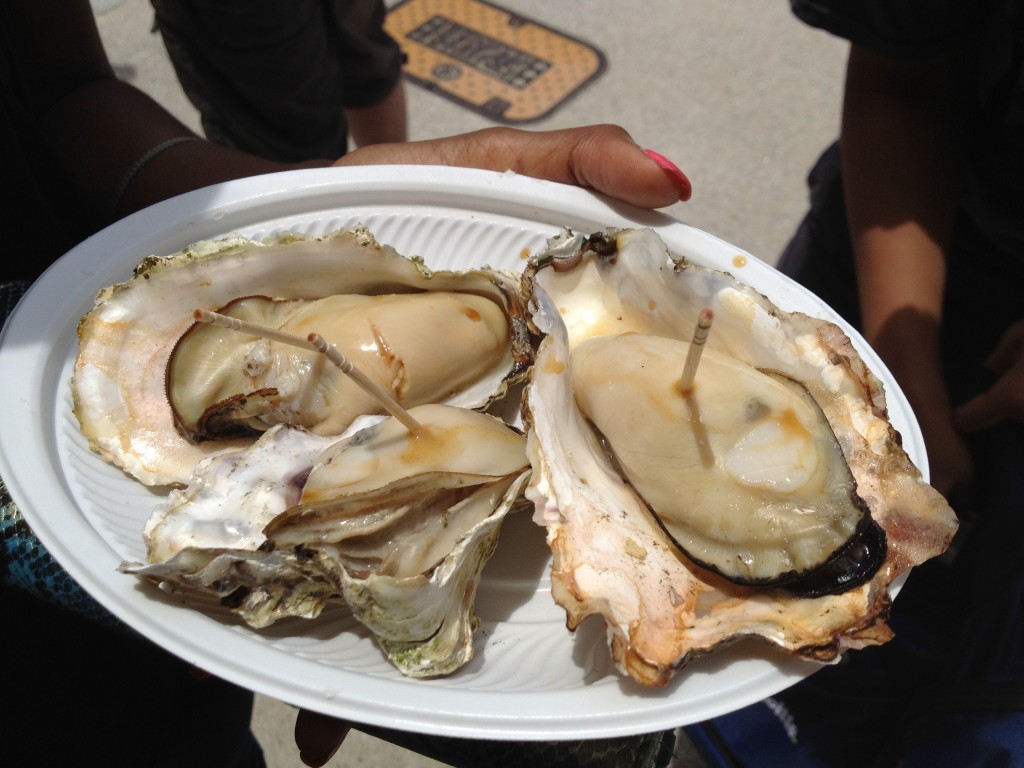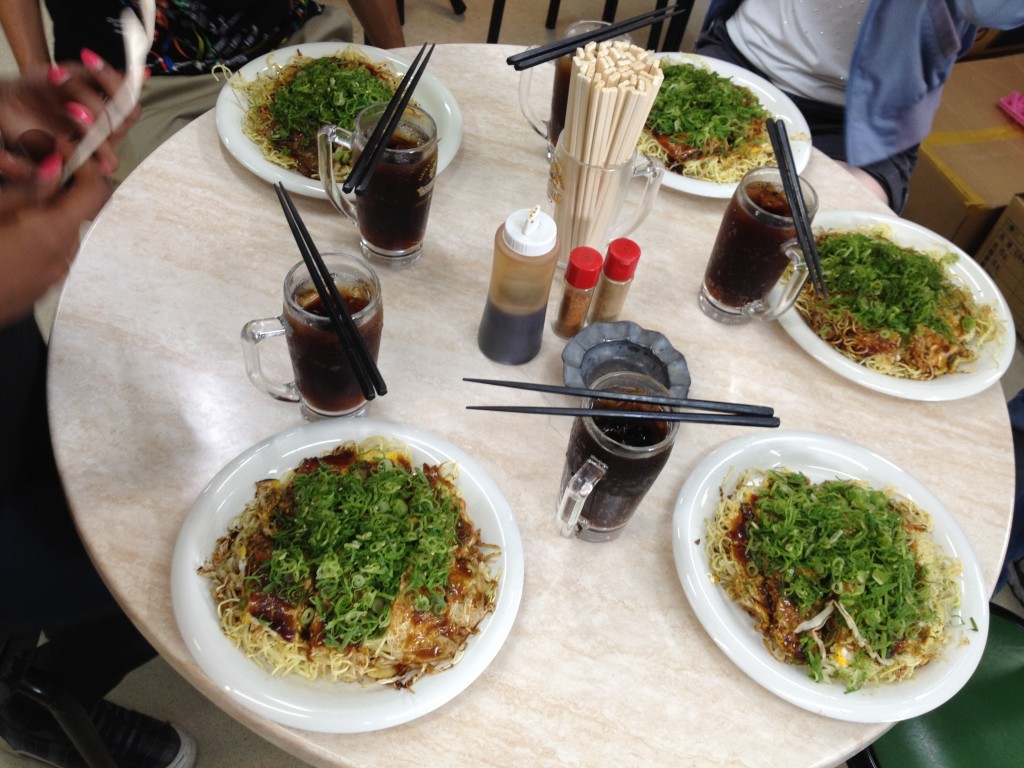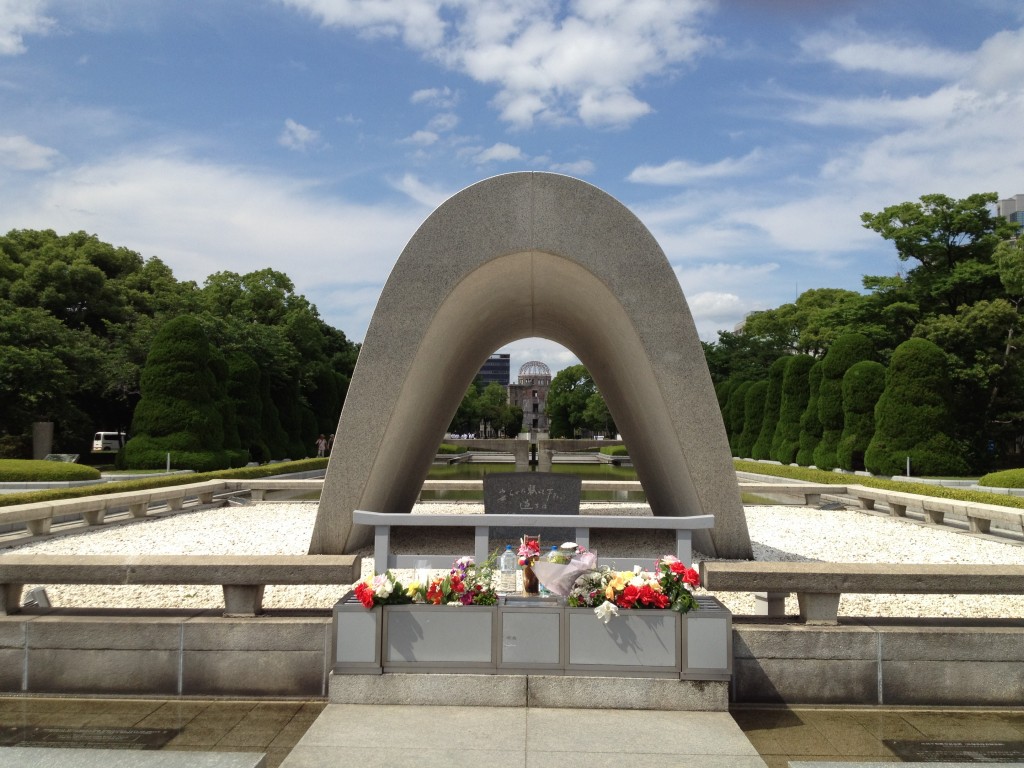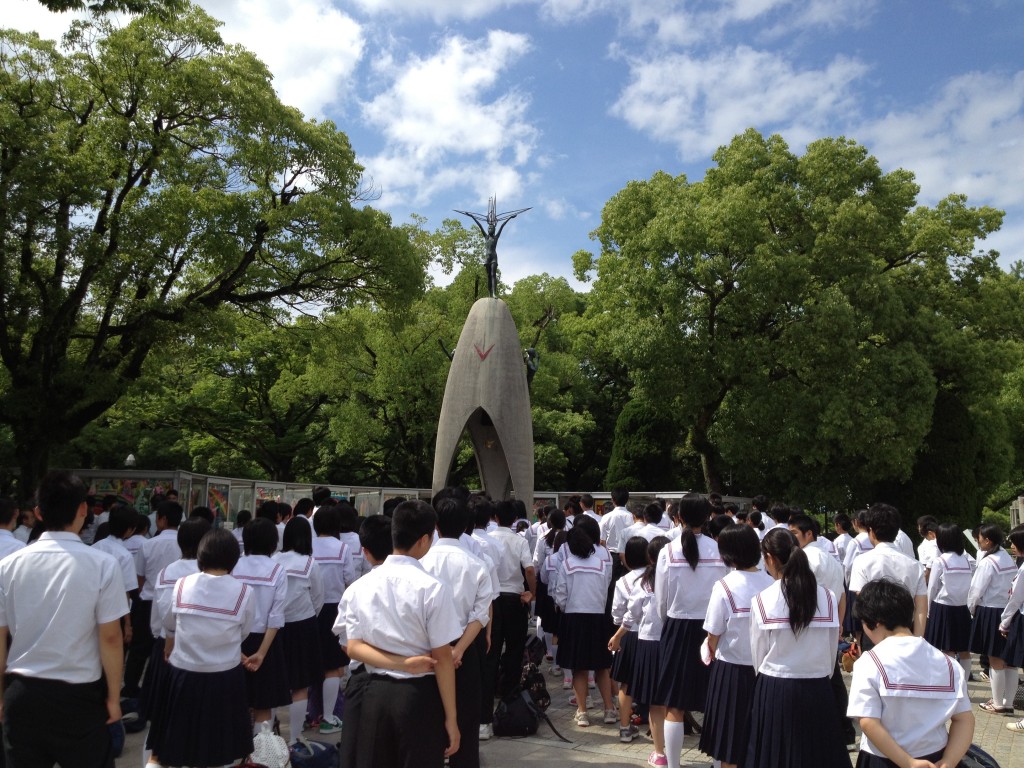By Erika Klein and Alex Karpos
Arriving in Hiroshima this morning after our second, and more relaxed, Shinkansen experience of the month, we immediately boarded a bus to visit the city’s well-known sites. Our guide, Masako, began her introduction with the suggestion that “perhaps the name Hiroshima reminds you of the first atomic bomb.” While she went on to mention some statistics related to the bomb, however, the first part of the day unexpectedly focused on less-popularly known aspects of Hiroshima, reminding us that the city is much more than one tragic event. Having learned that Hiroshima is Japan’s largest oyster-producing area, we observed the flat collection of rafts on the Seto Inland Sea as we traveled by ferry to the sacred Miyajima Island to visit Itsukushima Shrine.
Like Nara, the island was inhabited by half-tame deer, worshipped as divine creatures in Japan and unafraid of approaching humans and attempting to snag food or brochures for a quick snack. Besides photographing the antics of the deer (and those whom they surprised), we took pictures from every angle of Otorii Gate, which appears to float in the ocean during high tide.
The gate, serving as a barrier between the Shinto gods’ home on the mountainous island and the human realm of Hiroshima, shared the same orange, evil-expelling color as the ancient shrine, which we explored next.
On our way back to the ferry, we sampled tasty specialized Miyajima delicacies, including fresh grilled oysters, fish sticks combined with anything from cheese and bacon to roe, and small pancake-like momiji pastries filled with red bean, chocolate, cream cheese, green tea, or custard. For having previously known little (or nothing) about Hiroshima besides its famous role in World War II, it was very special and enlightening to be able to experience the other side of the city.
Following our morning visit to Miyajima, Masako guided us to an okonomiyaki restaurant. Best described as a “Japanese pizza,” the famous Hiroshima-specific version consists of a thin flour pancake topped with noodles, shrimp, squid, pork, and cabbage, all of which is under a layer of egg, cheese, and sauce. As daunting as this may sound, it was extremely delicious and we highly recommend it to any traveler.
After a relaxing lunch, we arrived at Peace Memorial Park, where our group was to spend the rest of the afternoon. Our tour of this site began with a preserved bombed-out building known as the “A-Bomb Dome.” Formerly the Industry Promotion Building of Hiroshima, the interior of this structure was decimated in the blast, though the infrastructure, notably the dome which gives the building its current name, still stands.
There are several memorials located in the park itself, including the Peace Flame and the Memorial Cenotaph. As Masako informed us, the flame at this memorial is not eternal, but rather will burn until all nuclear weapons are destroyed. The Memorial Cenotaph contains a list of those killed by the bomb, and is updated every year to include those who continue to die of radiation poisoning. The cenotaph and the flame, when viewed from the right angle, also line up with the A-Bomb Dome, creating a sense of the past, present, and future of Hiroshima.
We also visited the particularly touching Children’s Peace Monument within the park, built to honor a young girl named Sadako who, though uninjured in the blast, died of radiation poisoning several years after the bombing. While in the hospital, Sadako folded 1,000 paper cranes in the hope that, per Japanese tradition, her wish would come true. Sadako’s struggle and ultimate death sparked a national movement, and today this monument is surrounded by thousands, if not millions, of donated paper cranes. Even today, during our tour, we observed a large group of Japanese schoolchildren visiting the monument.
Lastly, we visited the Peace Memorial Museum. Truly breath-taking in the darkest sense of the phrase, the exhibits presented here detail the horrors and destruction caused by the atomic bomb, including many surviving artifacts, but also present the historical context before and after the bombing. Yet despite its saddening and often horrific content, the overall message of this museum, and the park in general, is not one of anger, but instead hope: hope that the world can learn from the mistakes of the past and do everything to prevent another Hiroshima. Despite the importance of its cultural heritage, Hiroshima’s new, peace-seeking role after becoming the world’s first atomic bomb victim has arguably become equally as central to its identity. Our trip to the Peace Memorial Park was a truly touching and moving experience, and something I will remember, and learn from, for the rest of my life.



